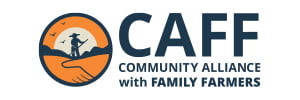BEFORE DISASTER STRIKES
From reducing fuel load on your property to crop insurance, there are many things you can do today to prevent or at least mitigate destruction in the event of a natural disaster. The below resources offer tips and tools for you, your farm and your community.


LAND, ECOSYSTEM & PROPERTY MANAGEMENT
Resources to help you prepare your home, your property and the land for disaster.

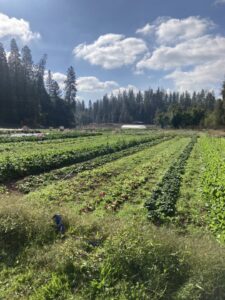
Gully Stuffing
Gullies pose many threats to farmland, including the removal of fertile topsoil, damage to infrastructure, danger to livestock, and decreased water quality. Also, due to loss of protective vegetation, erosion can increase after wildfire. Gully stuffing can reduce water velocity,
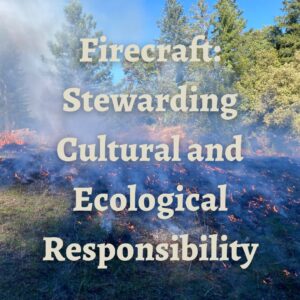
Earth, Fire, and Water
CAFF Sends Fellow to Fire Practitioner Training Last fall, CAFF’s Wildfire Resilience Program sent Josh Harjes, its resident Grizzly Corps fellow, to a Firefighter Type 2 training in northwestern Sonoma County. There he learned about fire lighting techniques, fire suppression
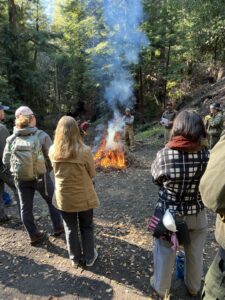
Pile Burning on Working Lands: Siskiyou County
On a chilly March morning in Northern California, a group of ranchers, land stewards, and fire practitioners held an all day workshop on a land management practice called pile burning. Justin Sandahl and his wife run an organic dairy and ranching
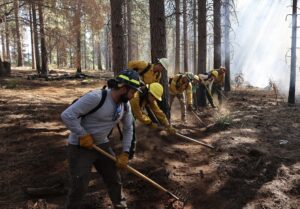
Wildfire Community Preparedness Day 2023
Happy wildfire community preparedness day! Have you ever looked at your calendar and noticed there’s a holiday that you’ve never heard of before? Sure, there are the ones that are quite well-known, but every once in a while you see
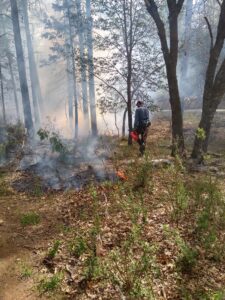
Episode 3: First Rain Farm- Nevada City
In this episode, we travel to First Rain Farm in Nevada County, where Tim Van Wagner is integrating a number of effective wildfire preparation methods on his property, as well as those of his neighbors and surrounding community. By combining

Episode 2: Wild Oat Hollow Penngrove, CA
In this episode, Sarah Keiser of Wild Oat Hollow in Penngrove, CA describes her entry into ranching and how her love of the land positioned her to become a leader in developing and supporting community grazing cooperatives. Join us as
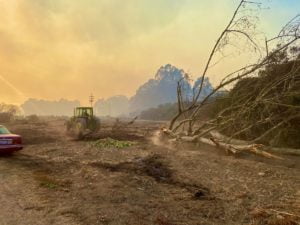
New Podcast Season: Farmer Stories of Wildfire Recovery & Preparedness
CAFF’s Wildfire Resilience Program provides specialized recovery and preparedness resources for small farms and communities in California impacted by wildfire and those seeking to prepare against future threats. One of the best mediums for conducting this type of outreach and

Breaking Down Soil Compaction: Does It Increase Forage Production?
Maintaining a healthy and vigorous pasture should be a major objective of grazing management, but it should also be used as a tool for maintaining acceptable soil physical conditions.

PREScRIBED FIRE
Using controlled burns to prevent future infernos.


Earth, Fire, and Water
CAFF Sends Fellow to Fire Practitioner Training Last fall, CAFF’s Wildfire Resilience Program sent Josh Harjes, its resident Grizzly Corps fellow, to a Firefighter Type 2 training in northwestern Sonoma County. There he learned about fire lighting techniques, fire suppression

Pile Burning on Working Lands: Siskiyou County
On a chilly March morning in Northern California, a group of ranchers, land stewards, and fire practitioners held an all day workshop on a land management practice called pile burning. Justin Sandahl and his wife run an organic dairy and ranching

RX Fire Field Guide – Placer RCD
The Rx Fire Field Guide created by the Placer County Resource Conservation District serves as a landowner education tool and provides a framework to guide discussions on prescribed burning between natural resource management agencies and private landowners. In addition to

Wildfire Community Preparedness Day 2023
Happy wildfire community preparedness day! Have you ever looked at your calendar and noticed there’s a holiday that you’ve never heard of before? Sure, there are the ones that are quite well-known, but every once in a while you see

Episode 3: First Rain Farm- Nevada City
In this episode, we travel to First Rain Farm in Nevada County, where Tim Van Wagner is integrating a number of effective wildfire preparation methods on his property, as well as those of his neighbors and surrounding community. By combining

Karuk Good Fire Report
Current Barriers to the Expansion of Cultural Burning and Prescribed Fire in California and Recommended Solutions

Webinar: Defensible Space and Infrastructure Hardening for Farms and Ranches
Watch the Defensible Space and Infrastructure Hardening for Farms and Ranches Webinar Recording here. Password: pT2XQ&sb

New Podcast Season: Farmer Stories of Wildfire Recovery & Preparedness
CAFF’s Wildfire Resilience Program provides specialized recovery and preparedness resources for small farms and communities in California impacted by wildfire and those seeking to prepare against future threats. One of the best mediums for conducting this type of outreach and

PROTECTING LIVESTOCK
Resources to help you prepare livestock in the event of a wildfire.

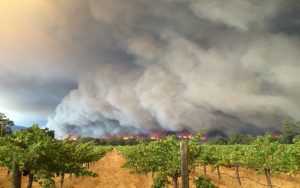
Ag/Livestock Pass Programs in California
What is an Ag/Livestock Pass? The Agriculture and Livestock Pass Identification Card is a form of verification that allows farmers and ranchers to access their properties and tend to their crops and livestock during disaster evacuations when conditions have been

Episode 3: First Rain Farm- Nevada City
In this episode, we travel to First Rain Farm in Nevada County, where Tim Van Wagner is integrating a number of effective wildfire preparation methods on his property, as well as those of his neighbors and surrounding community. By combining

Episode 2: Wild Oat Hollow Penngrove, CA
In this episode, Sarah Keiser of Wild Oat Hollow in Penngrove, CA describes her entry into ranching and how her love of the land positioned her to become a leader in developing and supporting community grazing cooperatives. Join us as

New Podcast Season: Farmer Stories of Wildfire Recovery & Preparedness
CAFF’s Wildfire Resilience Program provides specialized recovery and preparedness resources for small farms and communities in California impacted by wildfire and those seeking to prepare against future threats. One of the best mediums for conducting this type of outreach and
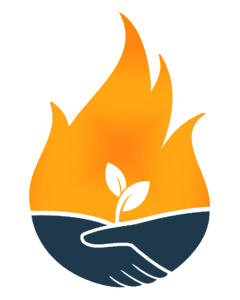
5 Key Wildfire Resilience Practices
It’s not always obvious that some of the ecological farming practices used frequently by farmers, also provide wildfire protection and recovery benefits. Check out the infographic below which was developed by our cross team at CAFF to learn more! Click

Community Grazing
Build resilience by transforming our wildland-urban-interface from neighborhoods into communities with grazing ruminants while increasing each community’s ability to withstand wildfire and drought by grazing livestock across property lines.

Animals in Disaster online training course, FEMA
This course is intended to help animal owners, care providers, and industries to understand incident management. The objectives of this course are to increase awareness and preparedness among animal owners and care providers, and to describe how typical hazards affect

Guide to Disaster Preparedness: Ag & Natural Resources
When disasters strike, animals as well as people need to be safely relocated. This guide is intended to provide useful information about developing a disaster response plan, about disaster preparedness training and resources, and to stimulate your thoughts on how

INSURANCE
Insurance options to help protect your crops and property against natural disasters.


Webinar: Climate Conversations: Insurance
A conversation about how to ensure the insurance industry can continue to support Americans amidst increasing climate hazards.

Webinar: Financial Prep For Disaster 101
From Farmer Campus, this recorded workshop will give you an overview of the financial resources available to farmers in the event that a disaster strikes.

Webinar: Small Farms Disaster Insurance Part 1
From Farmer Campus, this webinar provides an overview of insurance for small farms, including how insurance works and what to buy.

Micro Farm Program
Information about The Micro Farm program offered through the USDA. The Micro Farm program provides a risk management safety net for all commodities on your farm under one insurance policy. This insurance plan is tailored for any farm with up

Introducing The New Micro Farm Insurance Program For Farmer And Ranchers
This recorded webinar with Catharine Anderson the Risk Management Agency covers the new Micro Farm program. This new crop insurance program is offered through the Whole-Farm Revenue Protection policy and is tailored to small producers who sell their products locally with operations that earn

Service Providers for Small Farmers – Crowd Sourced
From Farmer Campus, this crowd sourced spreadsheet contains recommendations for farmers to obtain support and connect with agents around disaster and crop insurance, as well as bookkeepers, CPAs, and attorneys.

CA Dept. of Insurance
The California Department of Insurance (CDI) provides several information guides, tips and tools to help you understand home/residential insurance so that you can make the best decision for your situation. If you do not find the information you need, we invite you

The FAIR Plan
The FAIR Plan provides insurance as a last resort, and should be used only after a diligent effort to obtain coverage in the voluntary market has been made.

PREPARING YOUR COMMUNITY
Tips and resources to help your community prepare collectively for the event of disaster, from mobilizing your neighborhood to local policies.


Earth, Fire, and Water
CAFF Sends Fellow to Fire Practitioner Training Last fall, CAFF’s Wildfire Resilience Program sent Josh Harjes, its resident Grizzly Corps fellow, to a Firefighter Type 2 training in northwestern Sonoma County. There he learned about fire lighting techniques, fire suppression

Community Wildfire Planning Center
This non-profit organization believes in empowering people through wildfire education and action. They assist state and local governments, fire departments, land managers, and residents in creating safe and vibrant places. Also, they inspire change by facilitating positive outcomes. Check out

Wildfire Community Preparedness Day 2023
Happy wildfire community preparedness day! Have you ever looked at your calendar and noticed there’s a holiday that you’ve never heard of before? Sure, there are the ones that are quite well-known, but every once in a while you see

Episode 2: Wild Oat Hollow Penngrove, CA
In this episode, Sarah Keiser of Wild Oat Hollow in Penngrove, CA describes her entry into ranching and how her love of the land positioned her to become a leader in developing and supporting community grazing cooperatives. Join us as

New Podcast Season: Farmer Stories of Wildfire Recovery & Preparedness
CAFF’s Wildfire Resilience Program provides specialized recovery and preparedness resources for small farms and communities in California impacted by wildfire and those seeking to prepare against future threats. One of the best mediums for conducting this type of outreach and

The Combustibility of Landscape Mulches from the University of Nevada Cooperative Extension
Using the results from this project, recommendations are offered concerning the use of mulches in wildfire hazard areas.

Fire Safe Council Handbook
A Fire Safe Council is a coalition of public and private sector organizations that share a common, vested interest in wildfire prevention and loss mitigation.

Maneuvering Through Wildfire Evacuations – for Small Farmers
Farmers face increasing fire frequency, size and severity due to several factors, including climate change, the spread of invasive grasses and by changing farming practices. If you live and farm in California, wildfire is not an “if” but a “when”.

GENERAL FARM DISASTER PLANNING RESOURCES


Gully Stuffing
Gullies pose many threats to farmland, including the removal of fertile topsoil, damage to infrastructure, danger to livestock, and decreased water quality. Also, due to loss of protective vegetation, erosion can increase after wildfire. Gully stuffing can reduce water velocity,

Cómo responder a los apagones por motivos de seguridad pública (las “PSPS”)
En respuesta a condiciones climáticas adversas, el PG&E implementará un corte de energía por motivos de seguridad pública, lo que PG&E llama Public Safety Power Shutoff (PSPS) en inglés. En este reportaje, seguiremos usando las siglas en inglés (“PSPS”) para

Community Wildfire Planning Center
This non-profit organization believes in empowering people through wildfire education and action. They assist state and local governments, fire departments, land managers, and residents in creating safe and vibrant places. Also, they inspire change by facilitating positive outcomes. Check out

Wildfire Community Preparedness Day 2023
Happy wildfire community preparedness day! Have you ever looked at your calendar and noticed there’s a holiday that you’ve never heard of before? Sure, there are the ones that are quite well-known, but every once in a while you see

New Podcast Season: Farmer Stories of Wildfire Recovery & Preparedness
CAFF’s Wildfire Resilience Program provides specialized recovery and preparedness resources for small farms and communities in California impacted by wildfire and those seeking to prepare against future threats. One of the best mediums for conducting this type of outreach and

Wildfire Home Retrofit Guide
This Guide includes specific recommendations for how to retrofit existing components of a home to withstand wildfire. The illustrations throughout the Guide are intended to show best practices for reducing the vulnerability of a home to wildfire.

Maneuvering Through Wildfire Evacuations – for Small Farmers
Farmers face increasing fire frequency, size and severity due to several factors, including climate change, the spread of invasive grasses and by changing farming practices. If you live and farm in California, wildfire is not an “if” but a “when”.

5 Key Wildfire Resilience Practices
It’s not always obvious that some of the ecological farming practices used frequently by farmers, also provide wildfire protection and recovery benefits. Check out the infographic below which was developed by our cross team at CAFF to learn more! Click

The Aftermath
Once the smoke has cleared, there’s a lot more to do than just assess the damage. The steps you take in the aftermath of a natural disaster can help position you, your farm and your community for a healthy and equitable recovery. From financial aid to land management practices, these resources will help get you back on your feet and back to farming the food we need.


FARM RESILIENCE RESOURCES MADE POSSIBLE BY:

And to the hundreds of California farms, individuals and businesses that donated to The Just & Resilient Future Fund


